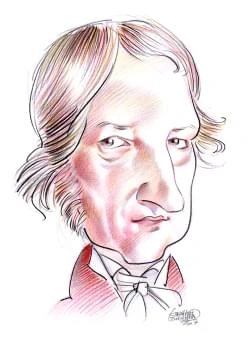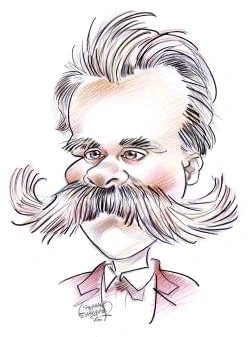288 résultats pour "lake"
-
Camping.
Commercial campgrounds serve as campsites for RV and car campers on the outskirts of national and state parks and along highways throughout North America.Owners of commercial campgrounds charge campers on a daily or weekly basis, and provide campsites equipped with hookups for electricity and water. They may alsoprovide such amenities as showers, laundry facilities, or a swimming pool. Many commercial campgrounds belong to a club or network that allows its members toreserve campsites in advance....
-
Colorado - geography.
Although the rivers of Colorado are navigable only by small boats, they are important as a source of irrigation water for use in Colorado and adjoining states. However,the water level of the rivers fluctuates seasonally and from year to year. The level is generally low in winter and high in spring and summer, during the runoff of meltedsnow from the mountains. Colorado has no large lakes of natural origin, but there are numerous small lakes in the mountains. The largest bodies of water in Colora...
-
Colorado - USA History.
Although the rivers of Colorado are navigable only by small boats, they are important as a source of irrigation water for use in Colorado and adjoining states. However,the water level of the rivers fluctuates seasonally and from year to year. The level is generally low in winter and high in spring and summer, during the runoff of meltedsnow from the mountains. Colorado has no large lakes of natural origin, but there are numerous small lakes in the mountains. The largest bodies of water in Colora...
-
Aztec Empire - history.
and Tlacopan. In 1428 the triple alliance defeated the Tepaneca. Under the Mexica ruler Itzcoatl, his successor Montezuma I, and the Texcocan ruler Netzahualcóyotl, thethree states waged a series of conquests. They eventually established an empire that extended from central Mexico to the Guatemalan border and included many differentstates and ethnic groups, who were forced to pay tribute to the alliance. Tenochtitlán became the dominant power within the alliance. IV AZTEC CIVILIZATION Aztec soc...
-
Seal (mammal) - biology.
remote lakes by swimming thousands of kilometers up rivers from the Arctic Ocean. A few other species such as ringed seals and harbor seals have been found livingyear-round in lakes and rivers near the coasts of Russia, Canada, and Alaska. IV DIET OF SEALS Most seals eat fish and sometimes squid. The leopard seal, an Antarctic species, may have the most diverse diet of all, commonly hunting penguins and other seabirds,smaller seals, as well as fish, squid, krill (small shrimplike crustaceans),...
- Borzage Frank, 1893-1962, né à Salt Lake City, cinéaste américain.
- Borzage (Frank) Metteur en scène de cinéma américain (Salt Lake City, 1893 - Hollywood, 1963).
-
Whitehorse - Geography.
Another issue in Whitehorse is water quality. Bacteria levels in Schwatka Lake, the city’s water source, have increased in recent years due to population growth in areasabove the lake. In addition, the city’s sewage treatment system discharges wastewater into the Yukon River. The level of waste treatment is not adequate, and thesewage poses a health hazard. Whitehorse is presently improving its sewage treatment system. VII HISTORY Whitehorse was founded during the Klondike gold rush of the lat...
-
-
Arctic - geography.
B Rivers and Lakes Low precipitation is characteristic of the Arctic, so large and elaborate river and lake systems are rare. In many places, however, permafrost (permanently frozen subsoil)restricts the downward drainage of meltwater from snow, and the water accumulates on the surface as shallow lakes, ponds, and marshes. In addition, rivers from morehumid regions flow seaward across the dry Arctic terrain. Several large rivers are in the Russian Arctic, and the Mackenzie and Yukon rivers are...
-
Dallas (Texas) - geography.
VI RECREATION Dallas contains more than 400 parks that cover a total of about 20,000 hectares (about 50,000 acres). Notable parks include Marsalis Park, which contains the DallasZoo, and the parks surrounding White Rock Lake, Bachman Lake, and Lake Cliff. City-owned greenbelts parallel White Rock Creek, Turtle Creek, and the Trinity River.Fair Park contains a number of museums, the city aquarium, and the Cotton Bowl stadium (the site of the annual Cotton Bowl college football game), as well as...
-
Delaware - geography.
D Climate Delaware has generally hot and humid summers and mild winters. D1 Temperature In July, average daytime temperatures are usually in the upper 20°s to lower 30°sC (80°sF) or even higher. But because summer nights tend to be cooler than thedays, July averages are about 24°C (about 75°F). In addition, onshore sea breezes can reduce daytime temperatures along the coast by 3 to 6 Celsius degrees (5 to 10Fahrenheit degrees). January averages range from -1°C (31°F) at Newark, in the north, t...
-
Delaware - USA History.
D Climate Delaware has generally hot and humid summers and mild winters. D1 Temperature In July, average daytime temperatures are usually in the upper 20°s to lower 30°sC (80°sF) or even higher. But because summer nights tend to be cooler than thedays, July averages are about 24°C (about 75°F). In addition, onshore sea breezes can reduce daytime temperatures along the coast by 3 to 6 Celsius degrees (5 to 10Fahrenheit degrees). January averages range from -1°C (31°F) at Newark, in the north, t...
-
Brazil - country.
occasional droughts. Brazil contains a wealth of mineral and plant resources that have not yet been fully explored. It possesses some of the world’s largest deposits of iron ore and containsrich deposits of many other minerals, including gold and copper. Brazil’s fossil fuel resources are modest, but this limitation is offset by the considerable hydroelectricpotential of the nation’s many rivers. Although Brazil is an important producer of tropical crops, areas of highly fertile land are limited...
-
Maryland - geography.
Maryland has no large natural lakes. The largest body of water is a reservoir, Deep Creek Lake, which has a surface area of only 18 sq km (7 sq mi). It lies on theAllegheny Plateau, behind a dam on a tributary of the Youghiogheny River. C Coastline The deeply indented shoreline has a length of 5,134 km (3,190 mi), of which only 50 km (31 miles) fronts on the Atlantic Ocean. The most significant coastal feature isChesapeake Bay. In the bay are many islands and Kent Island is the largest. The sta...
-
Maryland - USA History.
Maryland has no large natural lakes. The largest body of water is a reservoir, Deep Creek Lake, which has a surface area of only 18 sq km (7 sq mi). It lies on theAllegheny Plateau, behind a dam on a tributary of the Youghiogheny River. C Coastline The deeply indented shoreline has a length of 5,134 km (3,190 mi), of which only 50 km (31 miles) fronts on the Atlantic Ocean. The most significant coastal feature isChesapeake Bay. In the bay are many islands and Kent Island is the largest. The sta...
- Naiads (Naiades) Greek Nymphs of fresh bodies of water, such as springs, wells, brooks, streams, lakes, and marshes.
-
- Sibyl of Cumae Roman A prophetess who lived in a cave below a temple to Apollo in Cumae, a port in the Bay of Naples on Italy's western coast on the shores of Lake Averna.
-
Henry Morton Stanley.
VI EVALUATION If Stanley was among the most ruthless and driven of Europe’s African explorers, he also was among the most accomplished. Much of what the Western world came toknow about Central Africa, including the drainage of its lakes and rivers, was derived from Stanley’s explorations. Moreover, he was one of the central figures in eventsleading to the Scramble for Africa. His call for the Christianizing of Africans and for the development of commerce with the interior echoed the call Livin...
-
Henry Morton Stanley - explorer.
VI EVALUATION If Stanley was among the most ruthless and driven of Europe’s African explorers, he also was among the most accomplished. Much of what the Western world came toknow about Central Africa, including the drainage of its lakes and rivers, was derived from Stanley’s explorations. Moreover, he was one of the central figures in eventsleading to the Scramble for Africa. His call for the Christianizing of Africans and for the development of commerce with the interior echoed the call Livin...
-
Chicago (city, Illinois) - geography.
The Chicago River divides the city into three broad sections, known traditionally as the North, West, and South sides. The North Side is largely residential, interspersed withindustry. The West Side generally is a lower-income residential area and contains numerous industrial, railroad, and wholesale-produce facilities. The South Side occupiesalmost half the city and contains diverse residential neighborhoods, ranging from decayed tenement districts to areas of modest detached houses. The South...
-
River - geography.
In very large rivers, the water comes from rain that may have fallen as far as 6,000 km (4,000 mi) away. During the journey through rills and streams, the water’s flowmay erode and deposit sediment in the river’s channel and on its floodplain ( see Erosion; Deposit). The biggest rivers usually carry the largest amount of sediment. Yet some of the largest rivers may carry very little sediment because the watershed may not have a lot of sediment. A river carries the most sediment when the flow is...
-
Arthur
I
INTRODUCTION
King Arthur
Legend and lore surround the life of Arthur, a medieval king of the Britons.
Arthur Receiving ExcaliburAccording to legend, soon after King Arthur became ruler of Britain, he received his magnificent sword Excalibur from ahand that rose mysteriously from a lake. With Excalibur, Arthur led his armies to many victories over Britain’s enemies.Corbis Because of his humble origins, Arthur must overcome strong opposition from the British nobles to his royal claim, but eventually he is crowned. To help him in his taskof leading Britain, he receives a great sword, Excalibur, off...
-
North Dakota - geography.
Bismarck, the growing season averages 134 days, as the average date of the last killing frost is May 11 and that of the first killing frost is September 22. The length ofthe growing season drops to about 110 days in the northerly reaches of the state. The long periods of summer sunshine at this latitude, providing as much as 16 hoursof daylight in summer, help crops to mature quickly, thus compensating somewhat for the relatively short growing season. Temperatures in the north are, on the averag...
-
North Dakota - USA History.
Bismarck, the growing season averages 134 days, as the average date of the last killing frost is May 11 and that of the first killing frost is September 22. The length ofthe growing season drops to about 110 days in the northerly reaches of the state. The long periods of summer sunshine at this latitude, providing as much as 16 hoursof daylight in summer, help crops to mature quickly, thus compensating somewhat for the relatively short growing season. Temperatures in the north are, on the averag...
-
-
John Diefenbaker.
only Conservative elected from Saskatchewan, which had gone solidly to the Co-operative Commonwealth Federation (CCF), a coalition party dedicated to social andwelfare reforms. In 1952 the Liberals in Saskatchewan abolished Diefenbaker's Lake Centre seat altogether by merging it with the neighboring legislative district of Moose Jaw, where theCCF had a vast majority. In 1953 Diefenbaker decided to run for election in Prince Albert. Again he was the only Conservative returned to Parliament fromSa...
-
John Diefenbaker - Canadian History.
only Conservative elected from Saskatchewan, which had gone solidly to the Co-operative Commonwealth Federation (CCF), a coalition party dedicated to social andwelfare reforms. In 1952 the Liberals in Saskatchewan abolished Diefenbaker's Lake Centre seat altogether by merging it with the neighboring legislative district of Moose Jaw, where theCCF had a vast majority. In 1953 Diefenbaker decided to run for election in Prince Albert. Again he was the only Conservative returned to Parliament fromSa...
-
Sailing.
the sails sweep across the decks of the vessel from one side to the other, and also because of the danger of breaking spars. In wild jibing, control can be lostmomentarily and, if the seas are high, a small boat can broach —that is, veer on its side with danger of swamping or capsizing. An unintentional jibe in a heavy wind frequently has enough force to break the masts of a vessel. When jibing intentionally, careful sailors always haul in on the boom while turning, so that the boom willtravel...
-
Arkansas - geography.
temperature rises to the upper 30°s C (lower 100°s F). C2 Precipitation Arkansas receives about 1,000 to 1,300 mm (about 40 to 50 in) of precipitation a year, and some areas receive even more. Most of the rain comes during winter andspring and at times is so heavy as to cause flooding. Snow is rare in the south but amounts to more than 250 mm (10 in) a year in the mountains. C3 Growing Season Arkansas has a long growing season. It averages 211 days for the state as a whole and ranges from 241...
-
Arkansas - USA History.
temperature rises to the upper 30°s C (lower 100°s F). C2 Precipitation Arkansas receives about 1,000 to 1,300 mm (about 40 to 50 in) of precipitation a year, and some areas receive even more. Most of the rain comes during winter andspring and at times is so heavy as to cause flooding. Snow is rare in the south but amounts to more than 250 mm (10 in) a year in the mountains. C3 Growing Season Arkansas has a long growing season. It averages 211 days for the state as a whole and ranges from 241...
-
Samuel de Champlain.
From 1616 to 1620 Champlain spent most of each year in France, with brief summer visits to Québec. In France he had to struggle to keep the Canadian enterprisealive, raise capital, and enlist workers. He also had to fight to keep his command over Québec. In 1618 he presented reports on the future of the French colonies inAmerica to the king and to the French Chamber of Commerce. In these reports he proposed that 300 settler families and 15 Récollets be established at Québec, with 300 soldiers to...
-
Samuel de Champlain - explorer.
From 1616 to 1620 Champlain spent most of each year in France, with brief summer visits to Québec. In France he had to struggle to keep the Canadian enterprisealive, raise capital, and enlist workers. He also had to fight to keep his command over Québec. In 1618 he presented reports on the future of the French colonies inAmerica to the king and to the French Chamber of Commerce. In these reports he proposed that 300 settler families and 15 Récollets be established at Québec, with 300 soldiers to...
-
Glacier.
covered. In spring the snow cover begins to melt in the lower reaches, exposing the ice surface. As temperatures increase, the melting moves up the glacier. Thesnowline is the highest position the melting reaches during the year. Firn is old granular snow. The firn limit may not exactly coincide with the annual snowline since insome years rapid melting leaves behind firn patches below the snowline. Some glaciers exhibit features called ice streams and icefalls. Ice streams are valley glaciers th...
-
-
Oklahoma - geography.
portion and the Panhandle are classified as a steppe, where precipitation, typically 250 to 500 mm (10 to 20 in), is the controlling characteristic. January is usually the coldest month with an average of about 3°C (38°F) and extremes from -33°C (-27°F), the lowest ever recorded, to 33°C (92°F). Summer arelong and hot with temperatures in the upper 30°s C (lower 100°s F) common from May until September across the state. The growing season varies from less than 180days in the western Panhandle to...
-
Oklahoma - USA History.
portion and the Panhandle are classified as a steppe, where precipitation, typically 250 to 500 mm (10 to 20 in), is the controlling characteristic. January is usually the coldest month with an average of about 3°C (38°F) and extremes from -33°C (-27°F), the lowest ever recorded, to 33°C (92°F). Summer arelong and hot with temperatures in the upper 30°s C (lower 100°s F) common from May until September across the state. The growing season varies from less than 180days in the western Panhandle to...
-
Alabama (state) - geography.
indentations along the coast are measured, the state’s shoreline is 977 km (607 mi) long. It includes the shores of Mobile Bay, an inlet 56 km (35 mi) long at the mouthof the Mobile River. Barrier beaches partly block the entrance to the bay, leaving narrow openings on either side of Dauphin Island. Dauphin and other islands alongAlabama’s coast west of Mobile Bay are separated from the mainland by Mississippi Sound. D Climate Alabama has a humid subtropical climate, with short, relatively mild...
-
Alabama (state) - USA History.
indentations along the coast are measured, the state’s shoreline is 977 km (607 mi) long. It includes the shores of Mobile Bay, an inlet 56 km (35 mi) long at the mouthof the Mobile River. Barrier beaches partly block the entrance to the bay, leaving narrow openings on either side of Dauphin Island. Dauphin and other islands alongAlabama’s coast west of Mobile Bay are separated from the mainland by Mississippi Sound. D Climate Alabama has a humid subtropical climate, with short, relatively mild...
-
Jean Chrétien.
In 1969, when Chrétien introduced policy proposals based on this principle, indigenous peoples reacted with such hostility that he ultimately had to withdraw theproposals. Despite this and other clashes with indigenous leaders, Chrétien continued to work at improving the government relations with them. By the time he left theDepartment of Indian and Northern Affairs in 1974, he had earned their respect and appreciation for his efforts. Following the 1974 election, Trudeau appointed Chrétien pres...
-
Jean Chrétien - Canadian History.
In 1969, when Chrétien introduced policy proposals based on this principle, indigenous peoples reacted with such hostility that he ultimately had to withdraw theproposals. Despite this and other clashes with indigenous leaders, Chrétien continued to work at improving the government relations with them. By the time he left theDepartment of Indian and Northern Affairs in 1974, he had earned their respect and appreciation for his efforts. Following the 1974 election, Trudeau appointed Chrétien pres...
-
Texas - geography.
D Climate Eastern Texas has a humid subtropical climate, while a semiarid low latitude climate prevails in central areas, and an arid low latitude climate in the extreme west. Alongthe coast the climate is much milder, with fewer extremes in temperatures. Hurricanes sometimes hit the coastal areas of Texas from late July through September, andtornadoes are common in north-central Texas in April and May. D1 Temperature Summers are hot throughout the state, and temperatures exceeding 35°C (95°F)...
-
Texas - USA History.
D Climate Eastern Texas has a humid subtropical climate, while a semiarid low latitude climate prevails in central areas, and an arid low latitude climate in the extreme west. Alongthe coast the climate is much milder, with fewer extremes in temperatures. Hurricanes sometimes hit the coastal areas of Texas from late July through September, andtornadoes are common in north-central Texas in April and May. D1 Temperature Summers are hot throughout the state, and temperatures exceeding 35°C (95°F)...
-
-
Virginia (state) - geography.
C Coastline Virginia’s coastline, for both the mainland and the Eastern Shore counties, is 180 km (112 mi) long. The state’s tidal shoreline measures 5,335 km (3,315 mi), includingall bays, inlets, tidal estuaries, and other indentations. Major indentations include Chesapeake Bay; Hampton Roads, the excellent natural harbor on which are locatedNewport News, Norfolk, and Portsmouth; and the wide tidal estuaries of the lower Potomac, James, Rappahannock, and York rivers. Cape Henry, in the southe...
-
Virginia (state) - USA History.
C Coastline Virginia’s coastline, for both the mainland and the Eastern Shore counties, is 180 km (112 mi) long. The state’s tidal shoreline measures 5,335 km (3,315 mi), includingall bays, inlets, tidal estuaries, and other indentations. Major indentations include Chesapeake Bay; Hampton Roads, the excellent natural harbor on which are locatedNewport News, Norfolk, and Portsmouth; and the wide tidal estuaries of the lower Potomac, James, Rappahannock, and York rivers. Cape Henry, in the southe...
-
Berlin - geography.
boroughs of Wedding and Tiergarten. Other important central areas include Kreuzberg and Friedrichshain, now united as the Friedrichshain-Kreuzberg borough, andPrenzlauer Berg, now incorporated as a part of the Pankow borough. Tiergarten contains a large wooded park, a zoo, and a variety of public monuments as well as the large, modern Congress Hall and the Reichstag building, which wasbuilt from 1884 to 1894. The Reichstag and the surrounding area have undergone renovation to accommodate the Bun...
-
Nebraska - geography.
by natural resource districts to limit the rate of pumping for irrigation. C Climate Nebraska has a typical continental climate with wide seasonal variations in temperature. C1 Temperature Winter temperatures below -20°C (0° F) and summer temperatures in the upper 30°s C (lower 100°s F) are common. The average January temperature varies from about -7° C (about 20° F) in the northeast to about -2° C (about 29° F) in the southwest. The average for July, thehottest month, ranges from about 26° C...
-
Nebraska - USA History.
by natural resource districts to limit the rate of pumping for irrigation. C Climate Nebraska has a typical continental climate with wide seasonal variations in temperature. C1 Temperature Winter temperatures below -20°C (0° F) and summer temperatures in the upper 30°s C (lower 100°s F) are common. The average January temperature varies from about -7° C (about 20° F) in the northeast to about -2° C (about 29° F) in the southwest. The average for July, thehottest month, ranges from about 26° C...
-
New Orleans - geography.
D Metropolitan Region The New Orleans metropolitan region covers 8,800 sq km (3,400 sq mi) and includes the counties—known in Louisiana as parishes— of Orleans, Jefferson, Saint Bernard, Saint Charles, Saint John the Baptist, Saint Tammany, Saint James, and Plaquemines. At the center is the city of New Orleans, which is coextensive withOrleans Parish. It has a land area of 468 sq km (181 sq mi). Extending from this base are numerous suburban towns in the surrounding parishes. Metairie, Harahan...
-
Guatemala - country.
C Climate The climate of Guatemala varies according to elevation, from hot coastal plains to cold mountain heights. Most of the population lives between 900 and 2,400 m (3,000and 8,000 ft) above sea level, where there are warm days and cool nights with average annual temperatures of 20°C (68°F). The coastal regions are hot and humid,with average annual temperatures of 28°C (83°F). A rainy season, from May through October, is sometimes called “winter” because it brings cloudy afternoons andlower...
-
Kentucky - geography.
The climate of Kentucky is characterized by warm or hot summers and cool winters. Throughout the year, temperatures do not vary greatly from place to place,although they are generally slightly lower in the Appalachian Plateaus region than elsewhere in the state. Average July temperatures are usually from 24° to 27°C (76°to 80°F) in the central and western areas and from 23° to 24°C (74° to 76°F) in the east. January averages range from below 1°C (34°F) in the northern Bluegrassregion to more tha...
-
-
Kentucky - USA History.
The climate of Kentucky is characterized by warm or hot summers and cool winters. Throughout the year, temperatures do not vary greatly from place to place,although they are generally slightly lower in the Appalachian Plateaus region than elsewhere in the state. Average July temperatures are usually from 24° to 27°C (76°to 80°F) in the central and western areas and from 23° to 24°C (74° to 76°F) in the east. January averages range from below 1°C (34°F) in the northern Bluegrassregion to more tha...
-
Native Americans of North America.
addition to smallpox and measles, explorers and colonists brought a host of other diseases: bubonic plague, cholera, typhoid fever, scarlet fever, pleurisy, mumps,diphtheria, pneumonia, whooping cough, malaria, yellow fever, and various sexually transmitted infections. Despite the undisputed devastation wreaked on Indian populations after European contact, native populations showed enormous regional variability in their response todisease exposure. Some peoples survived and, in some cases, even...
}})








